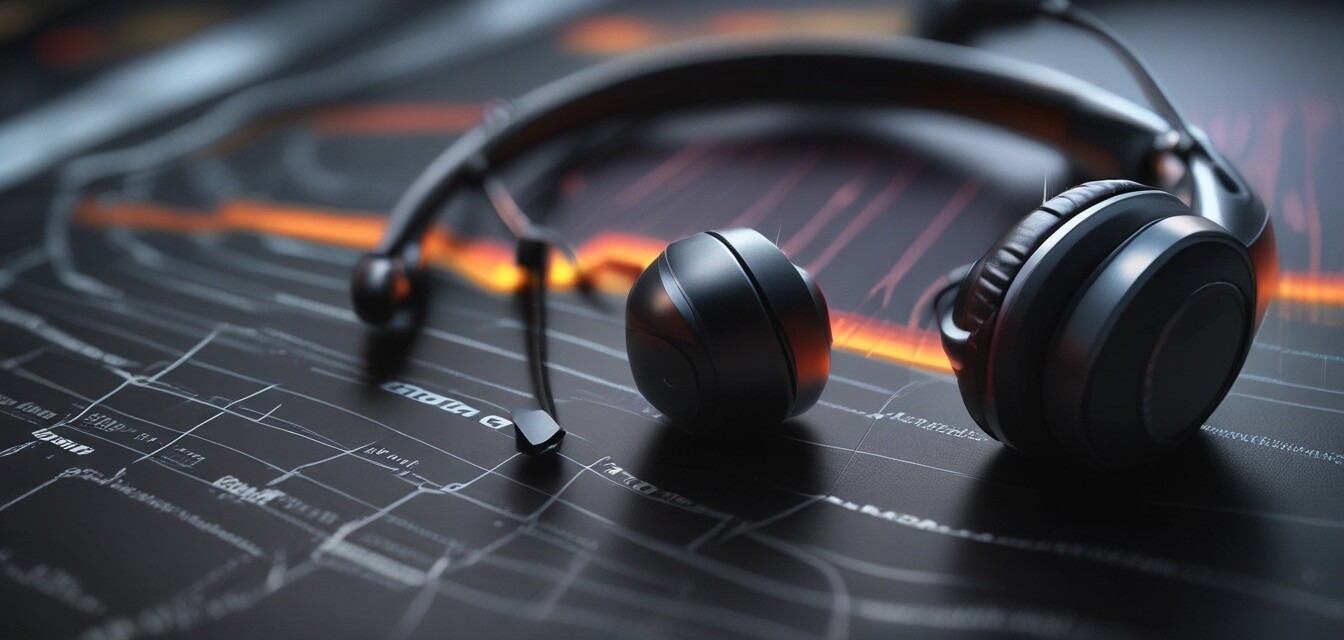
The Science of Earbud Frequency Response
Key Takeaways
- Frequency response is crucial for determining sound quality.
- The ideal frequency range for most music is between 20 Hz and 20 kHz.
- Earbud design influences the frequency response curve.
- Understanding your listening preferences can help in choosing the right earbuds.
- Calibration and testing ensure optimal performance.
Understanding the technical aspects of earbuds, particularly their frequency response, is essential for audiophiles seeking superior audio fidelity. This article delves into what frequency response is, its significance, and how it affects the listening experience.
What is Frequency Response?
Frequency response describes how well an audio device—like earbuds—can reproduce sound across various frequencies. It's usually represented as a graph showing the amplitude of sound (volume) against the frequency (pitch) measured in hertz (Hz).
The Frequency Spectrum
The audible frequency range for humans is approximately from 20 Hz to 20 kHz. Here's a brief overview of what those frequencies cover:
| Frequency Range (Hz) | Description |
|---|---|
| 20 - 250 | Bass: Low-end sounds, adding depth and richness. |
| 250 - 2000 | Midrange: Vocals and most instruments fall here, crucial for clarity. |
| 2000 - 20000 | Treble: High-end frequencies that provide airiness and sparkle. |
Why is Frequency Response Important?
Frequency response directly influences the audio quality and fidelity of earbuds. A balanced frequency response curve means that all ranges of frequencies are well represented, leading to a clearer and more enjoyable listening experience.
Understanding Frequency Response Curves
Most earbuds will have a frequency response graph provided by the manufacturer. A flat response line indicates uniform performance across frequencies, while peaks and valleys suggest enhancements or drawbacks in specific ranges.
- Flat Response: Preferred for accurate sound reproduction.
- Bass Boost: Often desired for genres like hip-hop; may distort higher frequencies.
- Treble Boost: Useful for enhancing vocal clarity but can lead to listener fatigue.
How Earbud Design Affects Frequency Response
The design of earbuds, including driver sizes, materials, and enclosures, plays a significant role in their frequency response. Here are some design factors:
| Design Factor | Impact on Frequency Response |
|---|---|
| Driver Size | Larger drivers can produce better bass, but smaller drivers may excel in treble clarity. |
| Material Quality | High-quality materials can enhance sound fidelity and minimize distortion. |
| Enclosure Type | Sealed enclosures enhance bass response, while open enclosures provide a natural sound field. |
Measuring Frequency Response
Accurate measurements of frequency response require specialized equipment. This process often involves a calibrated microphone and an audio analyzer to graph the response curve of the earbuds.
Choosing Earbuds Based on Frequency Response
Audiophiles should consider their personal sound preferences when choosing earbuds. Here are some tips:
Beginner Tips for Choosing Earbuds
- Listen before you buy; test earbuds across different music genres.
- Check online reviews to understand frequency response performance.
- Look for detailed specifications including the frequency response graph.
- Consider your listening environment, as background noise can affect performance.
Conclusion
Understanding the science of earbud frequency response empowers audiophiles to make informed decisions when selecting their listening devices. A well-balanced frequency response ensures an immersive audio experience, allowing listeners to appreciate their favorite music at its best.
For further insights, explore our Audio Quality Insights category for more detailed analyses on sound quality.
Pros
- Enhanced understanding of sound fidelity.
- Improved ability to select quality earbuds.
- Insight into how design affects audio quality.
Cons
- Some technical concepts may be overwhelming for beginners.
- Measuring frequency response requires specific equipment.
- Not all manufacturers provide clear frequency response data.